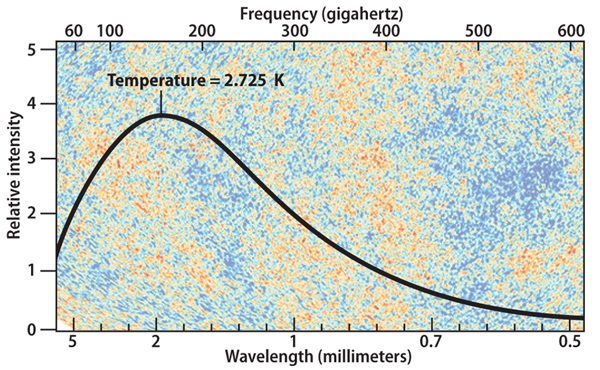Key Takeaways:
- The Cosmic Microwave Background (CMB) exhibits a black body spectrum with a temperature of 2.725 Kelvin, consistent with the prediction of thermal equilibrium in the early universe.
- This black body spectrum, precisely measured by COBE and subsequently confirmed by other experiments, strongly supports the Big Bang model, which posits a hot, dense, and opaque early universe.
- The CMB's near-perfect isotropy (uniformity in all directions) further corroborates the Big Bang theory's prediction of a homogeneous early universe.
- Minor temperature variations (one part in 100,000) in the CMB, also observed and mapped, are linked to the initial distribution of matter and are considered the seeds of large-scale cosmic structures.
Q: How do astronomers know that the cosmic microwave background is the result of the Big Bang?
A: In the standard Big Bang model, the universe evolved from a state in which it was extremely hot, dense, and opaque, and it has been expanding (and cooling) ever since. In the cosmos’ early history, protons, electrons, and neutrons repeatedly scattered and absorbed photons, the particles of radiation. Those interactions brought the radiation into a state of thermal equilibrium (physicists call this “black body” radiation). In this thermal equilibrium, light has a specific energy profile, or spectrum — once we measure the radiation’s intensity at any wavelength along this profile, we immediately know the intensity at any other wavelength.
Once the cosmos cooled to about 3000 kelvins, atomic nuclei could hold on to electrons, thereby allowing photons to travel unimpeded. This occurred nearly 400,000 years after the Big Bang. The radiation has stretched and shifted to redder colors since, and we now see this light as the cosmic microwave background (CMB).
In the 1990s, researchers with the Cosmic Background Explorer (COBE) discovered that a black body with a temperature of 2.725 K would create precisely the spectrum of the CMB (in fact, it matches that profile better than one part in 10,000). The spectrum also agrees with predictions from the Big Bang model.
After COBE, a number of experiments on the ground and in space — including the Wilkinson Microwave Anisotropy Probe and the Planck satellite — confirmed these results and revealed how minute temperature variations between different points on the sky are related. Mapping the radiation across the sky also revealed that it was extremely isotropic (the same in every direction), again just as expected from the Big Bang theory. But it wasn’t exactly the same: Its temperature varied from one area to another by about one part in 100,000 due to how the universe’s matter was distributed at the time when radiation traveled unimpeded. These tiny fluctuations at 400,000 years into cosmic history eventually formed the structure we observe in the universe today (like galaxies, clusters of galaxies, and superclusters).
Space Telescope Science Institute, Baltimore










